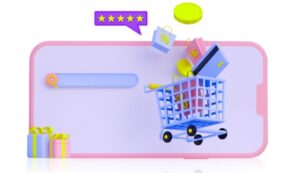

Email Marketing Strategies for Third-Party Sellers: Building & Nurturing Customer Relationships
In the ever-evolving landscape of e-commerce, email marketing remains a powerful tool for third-party sellers to build and nurture lasting customer relationships. This comprehensive guide explores effective email marketing strategies, from the foundational aspects of building subscriber lists to the art of creating engaging email campaigns that not only inform but also drive sales.
The Foundation: Building a Robust Subscriber List
Before delving into the intricacies of crafting compelling email campaigns, the first step for third-party sellers is to build a strong subscriber list. This list serves as the foundation for effective communication and relationship-building.
1. Implementing Opt-In Strategies
Encourage website visitors and customers to opt into your email list. Offer incentives such as exclusive discounts, early access to sales, or informative newsletters. Ensure that the opt-in process is seamless and user-friendly.
2. Leveraging Third-Party Platforms for List Building
Utilize the features of third-party platforms to expand your reach. Implement sign-up forms on your product listings, leverage social media to drive sign-ups, and explore partnerships with influencers or complementary brands for cross-promotion.
GET EXCLUSIVE ACCESS TO OUR EXPERTS THIRD PARTY PLATFORM SELLERS' TIPS AND ADVICE:
- Get AHEAD of the Competition.
- FREE Membership to Sarah’s Weekly Insiders secrets.
- FREE tailored resources and gifts.
- PLUS qualify to receive personal email support.

* We respect your privacy. We will not spam you.
3. Segmentation for Personalization
Segment your subscriber list based on relevant criteria such as purchase history, preferences, or demographics. This segmentation allows you to send targeted and personalized content, increasing the relevance of your emails to individual subscribers.
Crafting Engaging Email Campaigns: A Step-by-Step Guide
Once you have a solid subscriber base, the next step is to create email campaigns that captivate your audience and drive sales.
1. Welcome Series: Making a Positive First Impression
Develop a welcome series for new subscribers. Introduce your brand, highlight key products or services, and provide a warm welcome discount. This sets a positive tone for the customer’s journey and encourages them to explore your offerings.
2. Educational Content: Adding Value Beyond Sales Pitches
Balance promotional content with educational material. Share informative blog posts, how-to guides, or product tutorials that add value to your subscribers’ lives. This positions your brand as a valuable resource, not just a seller.
3. Personalized Product Recommendations
Leverage data on customer preferences and purchase history to provide personalized product recommendations. Tailor your recommendations to align with each subscriber’s interests, increasing the likelihood of conversion.
4. Limited-Time Offers and Flash Sales
Create a sense of urgency with limited-time offers and flash sales. Alert your subscribers to exclusive deals or discounts that are available for a short period. This encourages prompt action and can boost sales during specific campaigns.
5. Cart Abandonment Recovery Emails
Implement a cart abandonment email series to recover potentially lost sales. Remind customers of items left in their carts, offer incentives, and make the checkout process as seamless as possible. This strategy can significantly improve conversion rates.
6. Customer Feedback and Reviews
Encourage customer feedback and reviews through email campaigns. After a purchase, send a follow-up email requesting a review. Positive reviews can be showcased in future campaigns, building social proof and trust among your audience.
Optimizing for Success: Email Marketing Best Practices
To ensure the success of your email marketing efforts, it’s crucial to adhere to best practices that enhance deliverability, engagement, and overall effectiveness.
1. Mobile Optimization
Optimize your emails for mobile devices. Many users check their emails on smartphones, so ensure that your campaigns are responsive and visually appealing on smaller screens.
2. A/B Testing for Continuous Improvement
Conduct A/B testing on various elements of your email campaigns, such as subject lines, call-to-action buttons, and visuals. Analyze the results to refine your approach and optimize for better performance over time.
3. Consistency in Communication
Establish a consistent schedule for your email communication. Whether it’s weekly newsletters, monthly promotions, or special announcements, consistency helps build anticipation and keeps your brand top of mind.
4. Clear Call-to-Action (CTA)
Every email should have a clear and compelling call-to-action. Whether it’s to shop a sale, read a blog post, or participate in a survey, guide your subscribers on the desired action and make it easy for them to follow through.
5. Compliance with Privacy Regulations
Ensure that your email marketing practices comply with privacy regulations, such as GDPR or CAN-SPAM. Obtain explicit consent for sending marketing emails and provide clear opt-out options for subscribers who wish to unsubscribe.
Conclusion: Fostering Long-Term Customer Relationships Through Email
In the realm of third-party selling, effective email marketing is not just about making a sale; it’s about building and nurturing long-term customer relationships. By mastering the art of building subscriber lists, crafting engaging email campaigns, and adhering to best practices, third-party sellers can leverage email as a powerful tool for customer retention, loyalty, and sustained success in the competitive e-commerce landscape.
MORE LIKE THIS...
Bringing you the latest information, ideas, products and services for your E-commerce business.
Copyright 2024 E-Market Pulse
Contact Us
We may receive compensation from partners listed through affiliate partnerships, at no cost to you. This doesn’t influence our ratings, and the opinions are our own
Subscribe to our Newsletter
Get updates on products and services specially targeted to help you succeed.
